We Meet an Artist Carrying On Japan’s Hand-Poked Tattoo Traditions
November 24, 2020Horihiro Mitomo is a horishi, or tattoo artist, who works entirely by hand in his studios in Tokyo and Osaka, drawing on traditional materials and techniques to create the elaborate, full-body tattoos known as horimono.
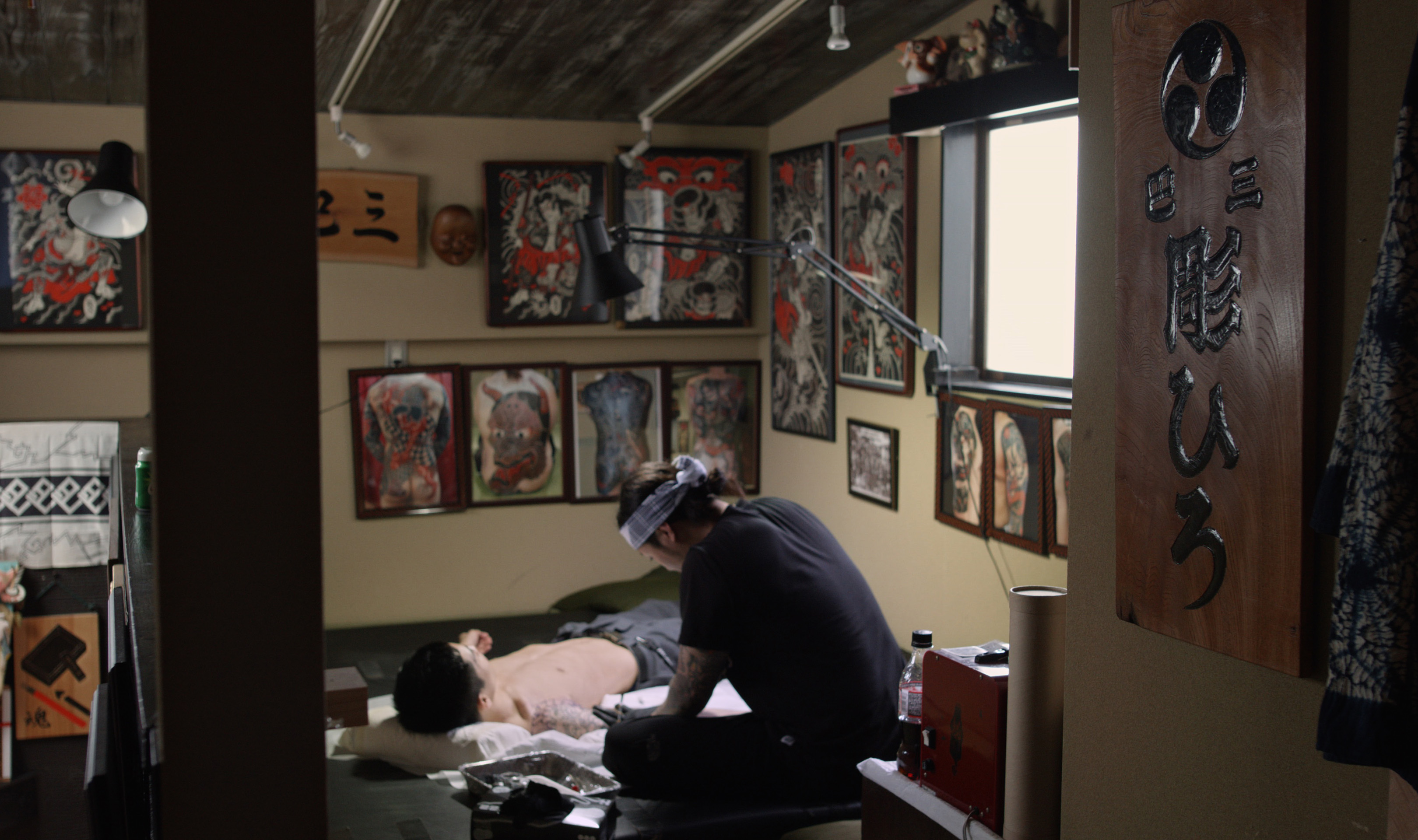
He appears in the opening scene of the VICE film Horimono: Japan’s Tattoo Pilgrimage, co-directed by David Caprara and Kira Dane, and is a member of the Choyukai, the group the film follows on their holy mountain pilgrimage.
Horihiro got into tattoos almost twenty years ago. “I got a tattoo and since I like drawing and painting, I wanted to try it myself,” he said. Since then, he has worked continuously to master his craft.
Here, he talks to VICE World News about traditional Japanese tattoos and why he sticks to the old methods.
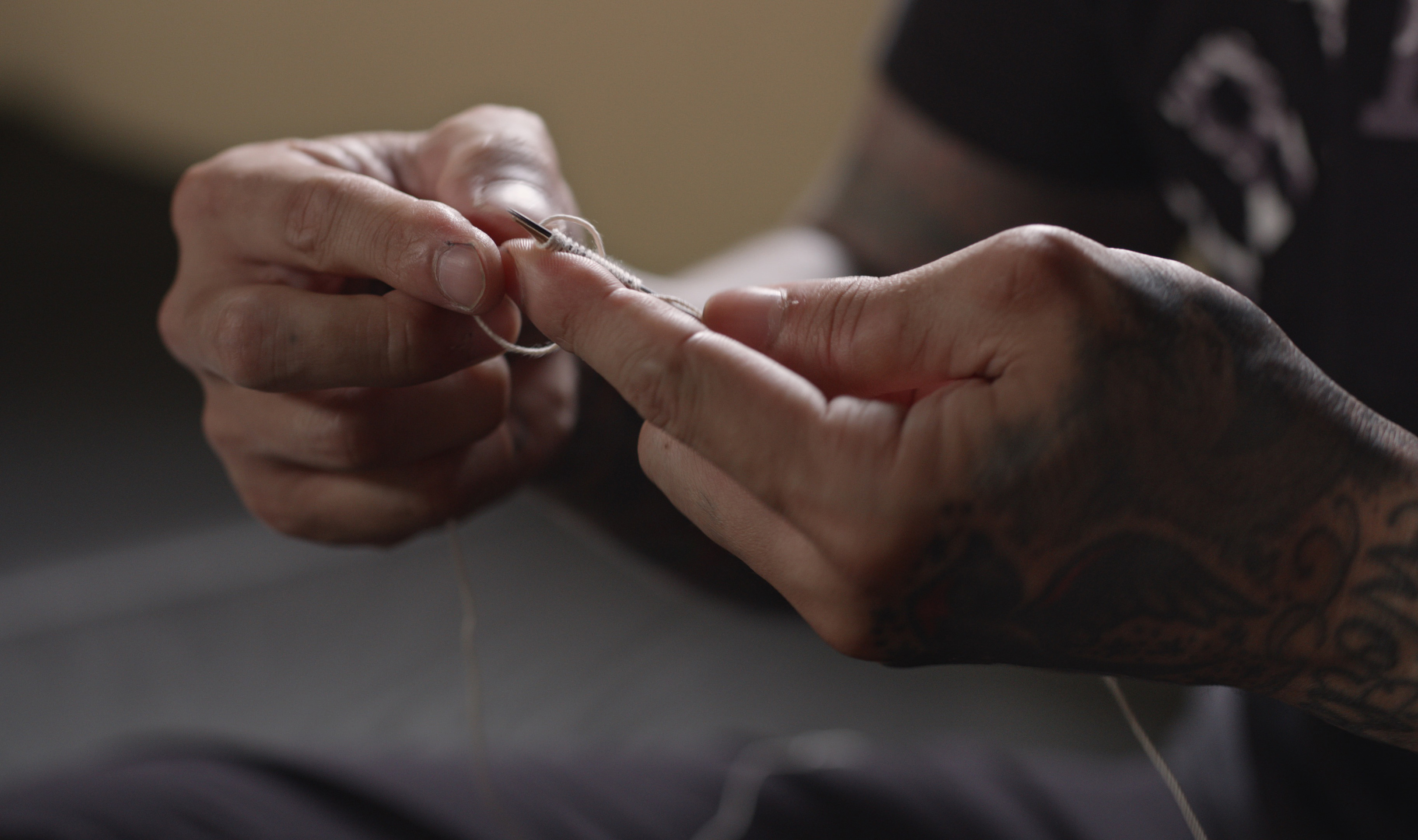
VICE World News: You work exclusively by hand, eschewing tattoo machines. Why is that?
Horihiro: I don’t have anything against tattoo machines. Lots of very talented tattoo artists, both in Japan and overseas, are producing truly amazing tattoos with machines, including Japanese-style tattoos. I used them too, when I first started doing tattoos, almost two decades ago. But about seven years ago, I switched to tebori tattooing. Tebori, which literally means “hand carved,” uses techniques developed in Japan hundreds of years ago, long before electricity, so naturally, all work had to be done by hand.
Can you explain what you mean by Japanese-style tattoos? There are a lot of terms bandied about when people talk about Japanese tattoos—for example, irezumi, wabori and horimono. What’s the difference?
I’m aware that many people, both in Japan and overseas, use the term irezumi when talking about Japanese-style tattoos. But strictly speaking, irezumi refers only to a very specific type of tattooing that was done long ago on criminals. These were simple lines, in black only, that were tattooed on criminals’ arms or faces to warn others that they had been convicted of illegal activity. Tattooing as a punishment was abolished in Japan more than 150 years ago.
When Japan opened to the West in the 19th century, after centuries of isolation, Japanese people saw Western travellers with tattoos, which were quite different from what anyone in Japan had seen before. So the term wabori (Japanese tattoo) was coined at that time to distinguish traditional Japanese tattoos from Western-style tattoos. It’s kind of a catch-all phrase.
Most of your work is the so-called horimono tattoos. Can you explain what they are?
At its most basic, a horimono is taking a design from the Japanese woodblock tradition – ukiyo-e prints – and applying it to your back. Unlike the typical Western tattoo, which begins as a small piece without a background, and may expand into lots of small pieces worked in together, a horimono is always a single, unified design. When complete, it covers the back and shoulders, and extends around to the chest and arms, and down the buttocks and legs. But it’s all one, unified design.
This style of tattooing developed in the 18th and 19th centuries, part of a great flourishing of culture in Edo (now Tokyo), which was then the largest city in the world. At that time, it was very fashionable among the working-class men of Edo to sport one of these full-body tattoos, particularly among those in occupations that required working in a state of partial undress.
Wait… there were clothes-optional jobs?
There were a lot of physically demanding jobs in those days. Clothing could get in the way or even pose dangers. In many occupations, including mail runners, palanquin bearers and carpenters, men usually worked in only loin cloths and sandals. Their bodies were exposed and could be freely seen, and they liked to decorate them with elaborate and colorful tattoos. The word used for that kind of tattoo, at that time, was horimono. By not using the word irezumi they were making a clear distinction between this type of fashionable tattoo and the simple monochrome ones previously used to mark criminals.
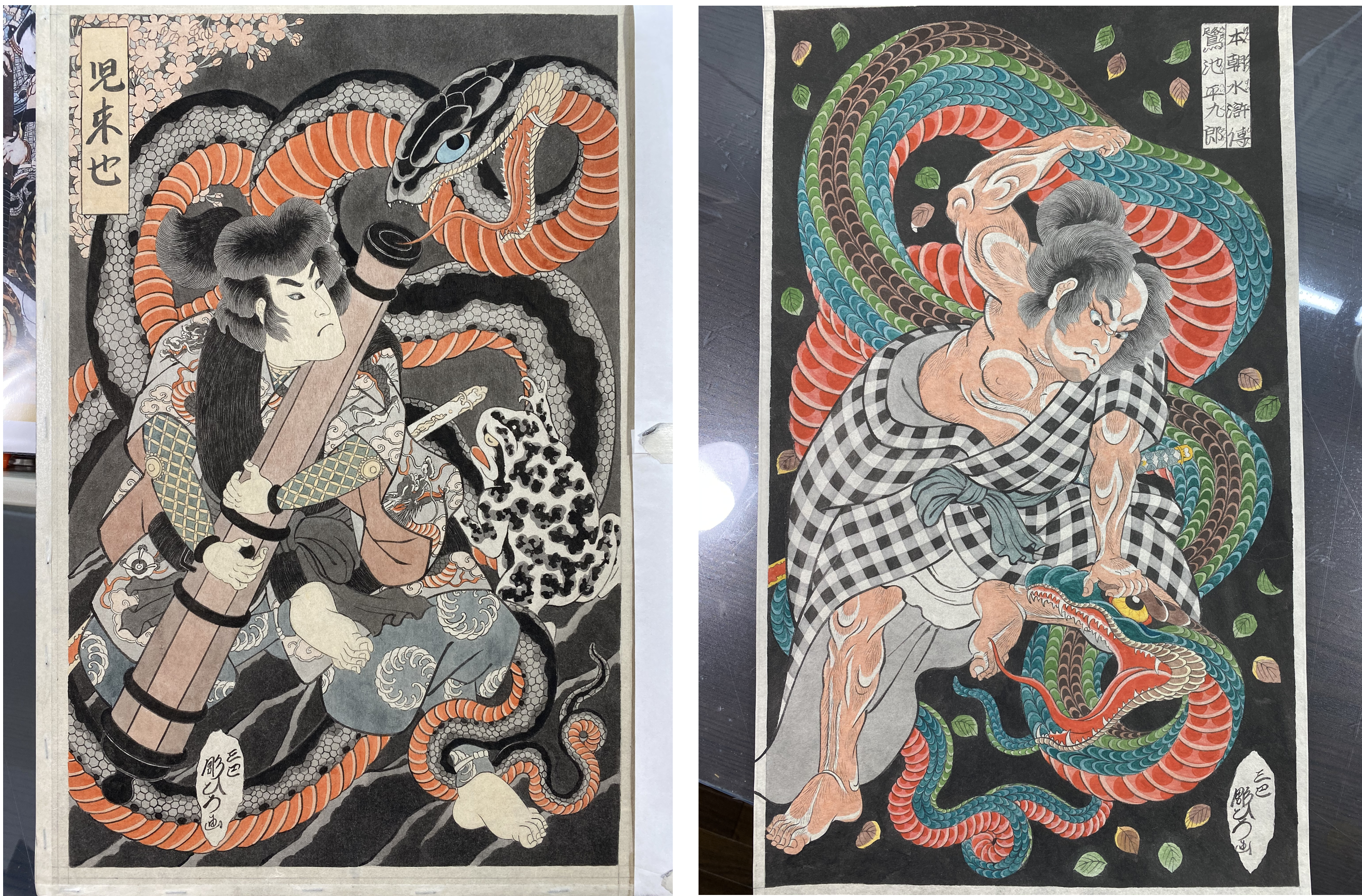
What sort of designs were popular?
They favored designs from popular ukiyo-e prints of the day, particularly those done by famous artists like Utagawa Kuniyoshi (1798-1861) and Tsukioka Yoshitoshi (1839-1982). Kuniyoshi did a famous series based on the novel “Suikoden” (known in English as “Tales from the Water Margin” and “Outlaws of the Marsh”), which is actually a Chinese story, but it became a huge hit when it was published in Japanese. It is also the inspiration for a lot of manga, and even a video game, and is well known in Japan. The heroes from the story are still popular motifs for horimono tattoos today.
By the way, many of the heroes in Kuniyoshi’s prints are themselves sporting tattoos, so a lot of my customers ask for what’s called a nijūbori, which means a double tattoo or a tattoo within a tattoo. Basically, I’m giving them a tattoo of a hero who has a tattoo. It looks really cool.
Do you have to adapt an ukiyo-e design to make it work as a tattoo?
Sure, because the human body is very different from a flat piece of paper. There are conventions in ukiyo-e for body proportions, such as hattōshin (literally, eight-heads-body), in which the head makes up one-eighth of the total height, and rokutōshin (six-heads-body), in which the head makes up one-sixth of the total height. But for a tattoo, it works better to enlarge the head quite a bit, so it’s really exaggerated. It fits better on the back. You also have to simplify the design because there’s no way to achieve the same level of detail in a tattoo. The artisans who carved the blocks for ukiyo-e masters like Kuniyoshi and Hiroshige were highly skilled carvers, able to produce amazingly fine lines. It’s just not possible to get the same level of detail when working with needles on human skin.
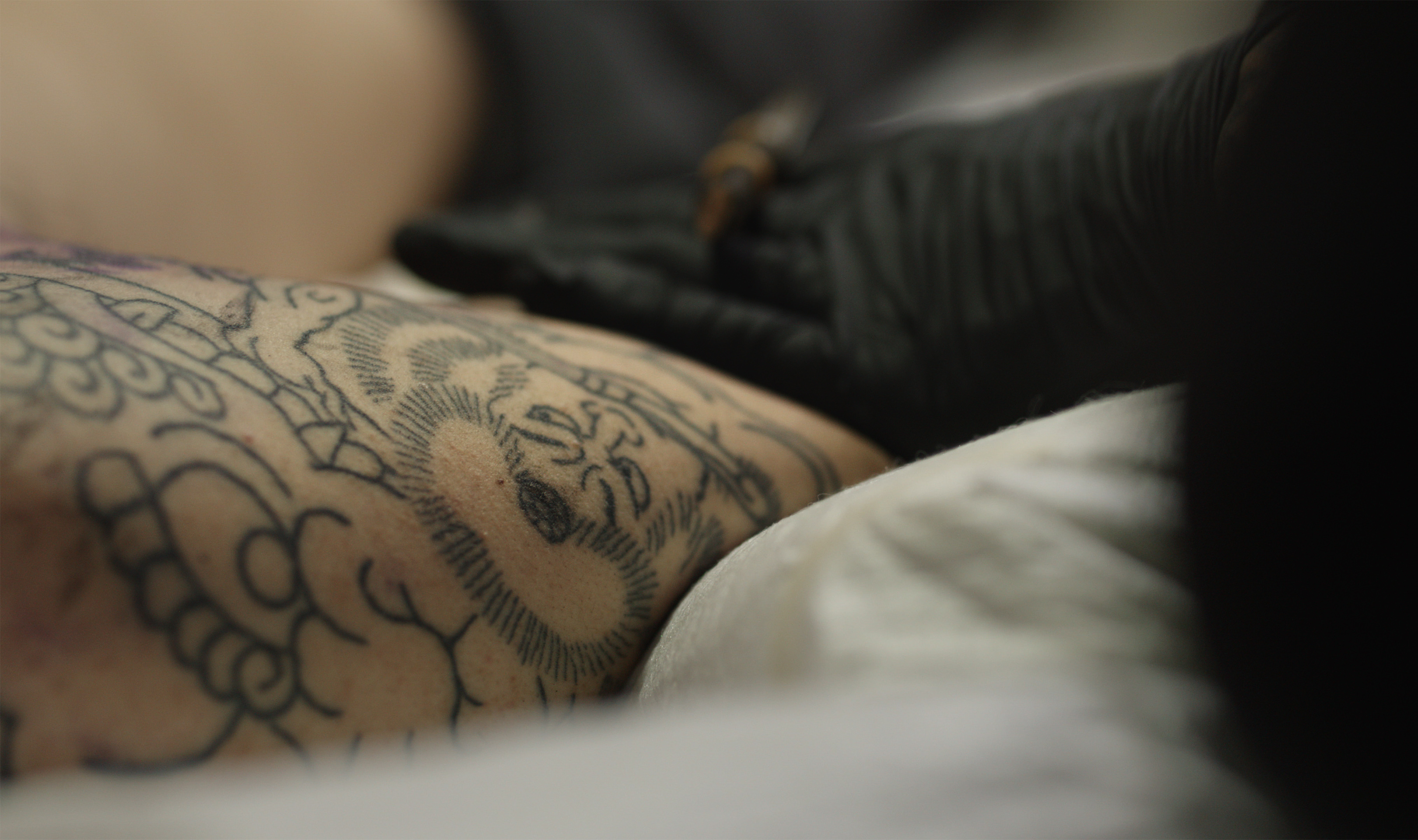
As an interesting aside, some scholars believe that many of the early horimono tattoos were created by the very artisans who carved the blocks for making woodblock prints, moonlighting in their spare time. Many of the tools, materials and techniques do indeed seem to have been similar. And the word for a woodblock carver, horishi, is the same term used for a tattoo artist. The “hori” in “horishi” and “horimono” means “to carve.”
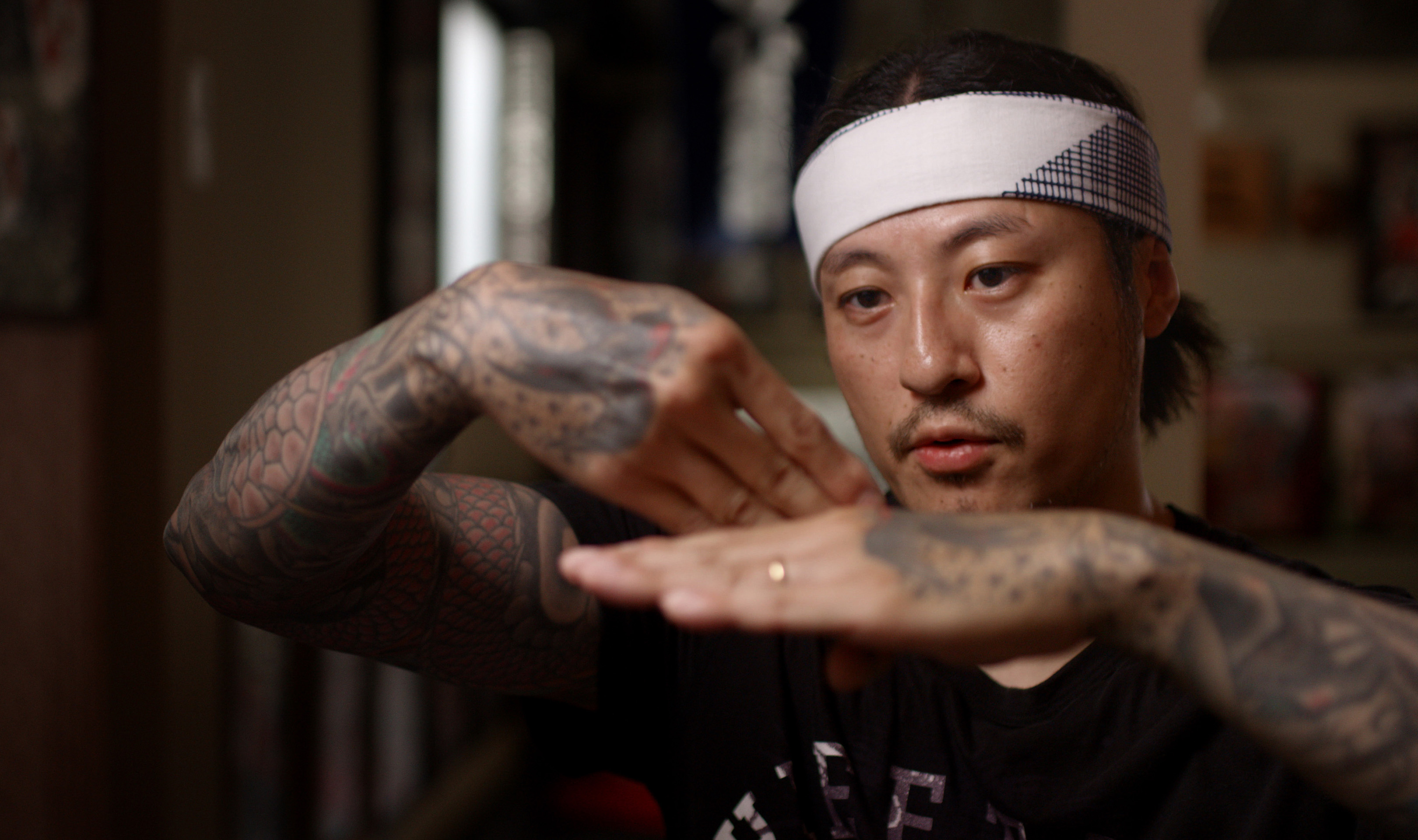
What makes a tebori tattoo different from one done with a machine?
With a tattoo machine, the needles operate straight up and down, at basically a 90 degree angle to the skin. But in tebori, we insert the needles at a pretty steep slant relative to the skin, so it goes in at an angle. This changes the way the color appears from the surface, with the black taking on a greenish tint. It gives the finished tattoo a different appearance. Working by hand gives you more options in how you combine and configure your needles, and the angle at which you insert them. For me, tebori allows a greater range of expression.
There are also differences in ink. Artists who use machines use prepared inks that are formulated for machine use, but for a tebori tattoo, we use traditional Japanese ink, which is called sumi. There are many different kinds, but the basic formula is soot, collected while burning specially selected woods and plants, mixed with an animal glue called nikawa. The ink comes in solid form, as a stick, and you have to rub it on an inkstone with water to prepare your ink just before you start tattooing.
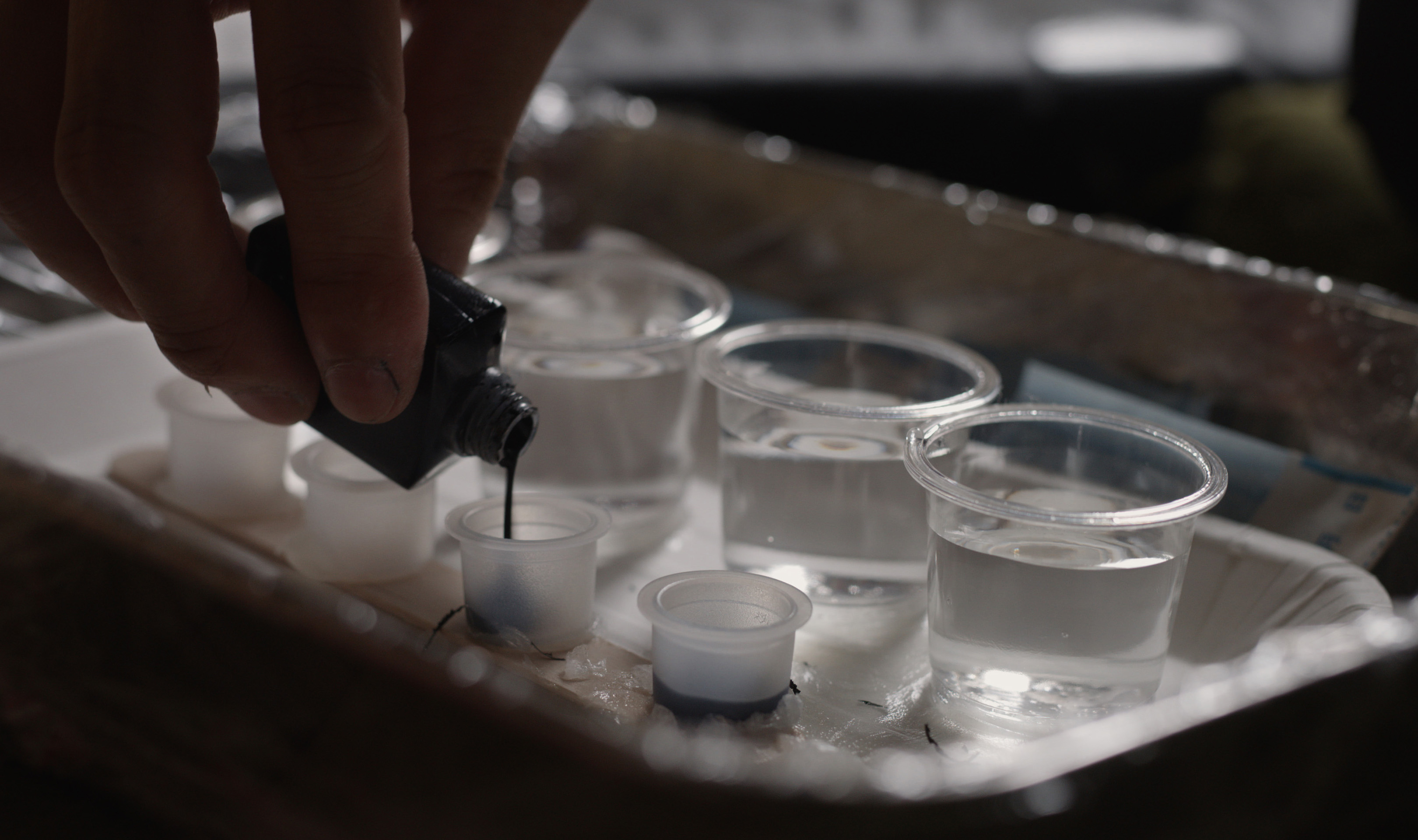
Is that the same ink that’s used by calligraphers and in traditional ink painting?
It is. And if you’ve ever worked with it, or watched someone do calligraphy with it, you know that it has some special properties. Think first about watercolors, which I’m sure you used when you were a schoolchild. Once they’ve dried, the color stays put, right? Even if you spill water on them. The ready-made ink sold for use with tattoo machines is like that – it’s designed to stay put where it’s inserted, without running or bleeding. But Japanese sumi ink is different. On paper, even after it has dried, if you go over it with a wet brush it will run again. It behaves the same way in human skin. It tends to move and spread a little under the skin, so the lines become slightly blurred. I like the softer effect that results.
Tell us about your tools. Are these something anyone can buy?
No. Anyone who does tebori has to make their own tools. Unfortunately there is very little information available about the tools used in the old days, when horimono tattoos first developed. We do have some old books of tattoo designs but nothing about tools, and the tools themselves didn’t survive. So unless you are fortunate enough to be taught by a master, figuring out what needles to use, how to attach them and devising the right configuration, becomes a matter of trial and error. The configuration of needles makes a huge difference in the look of the finished tattoo, so everyone keeps their tools secret.
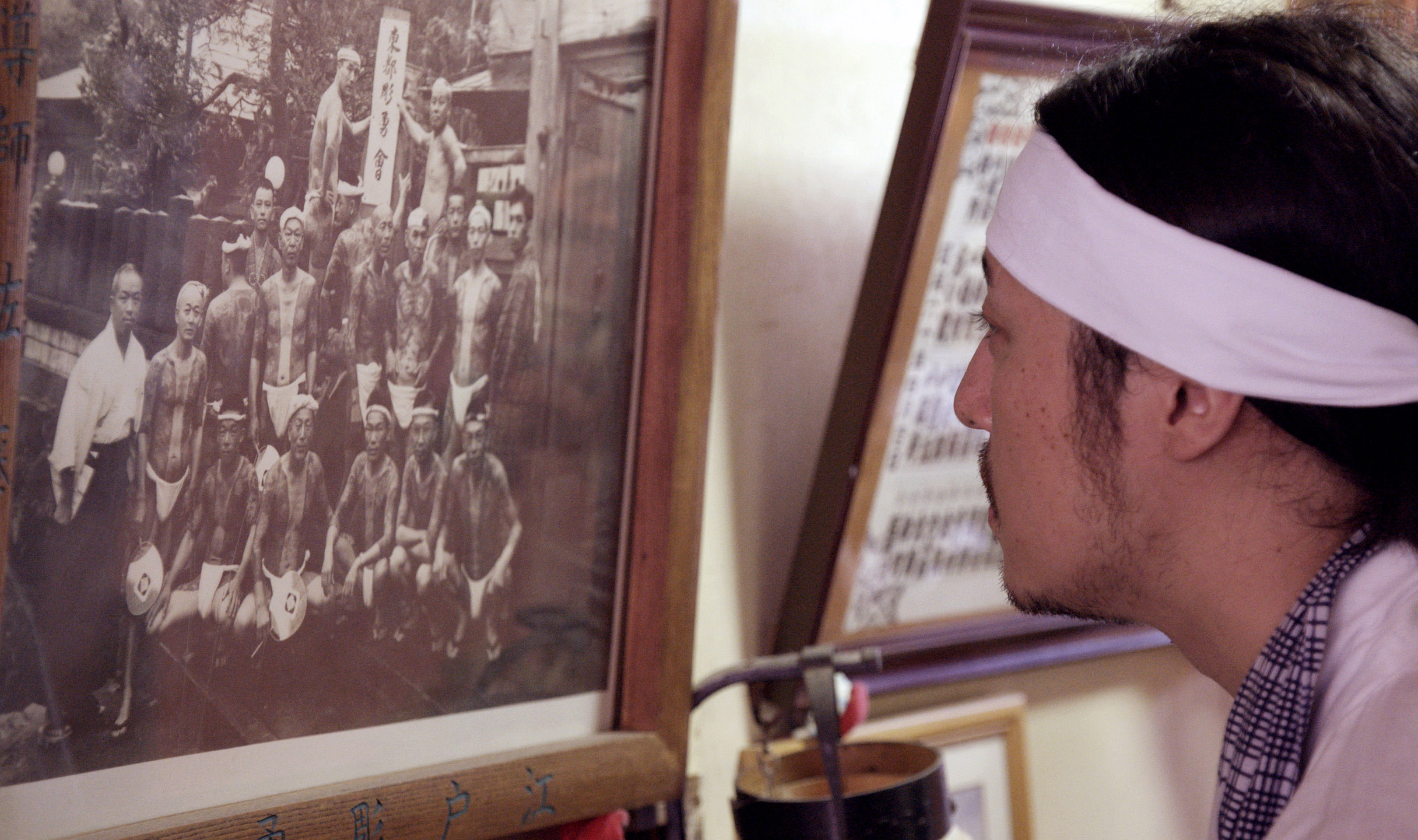
You are a member of the Choyukai, the group that was followed in the film Horimono: Japan’s Tattoo Pilgrimage. What attracted you to the group?
I have been very influenced by the designs of Horiuno (1843-1927), a very famous tattoo artist who lived and worked around the turn of the 19th and 20th centuries. The Choyukai was originally formed by his customers, as a friendship group, organizing various outings and celebrations as well as an annual pilgrimage to Mt. Oyama to pay respect to the gods and seek blessings. Horiuno’s work was carried on by his son, Horiuno II, and then for one more generation by Horiuno III, and their customers continued the traditions of the Choyukai. Many of the older members of the Choyukai today have tattoos done by Horiuno III, who is elderly and no longer working, so for me, joining the Choyukai was an opportunity to see these tattoos in person and study the designs. The group now includes people who have tattoos done by other artists too, so it is also an opportunity for me to study many different styles and learn from them.
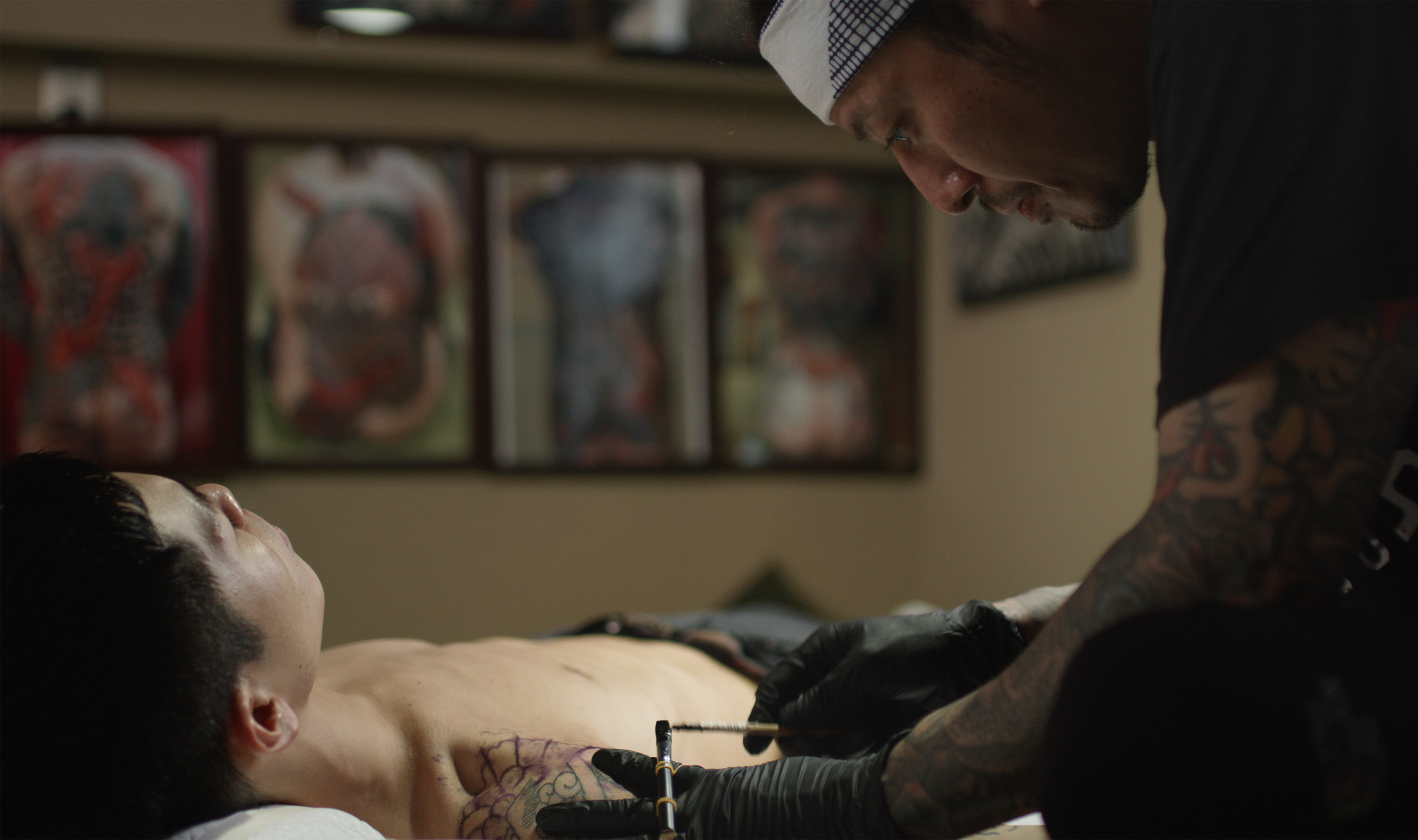
The Choyukai’s annual pilgrimage to Mt. Oyama is a tradition that has continued for over a hundred years. I participate to help move that tradition forward – one small cog in the wheel – so it can continue for another one hundred or two hundred years. I do this out of respect for Horiuno, and to thank him and his successors for everything I have learned from them. It is out of respect for all the tattoo artists who came before me that I want to keep the old techniques alive and pass them on to the next generation.
With reports from David Caprara and Kira Dane.
